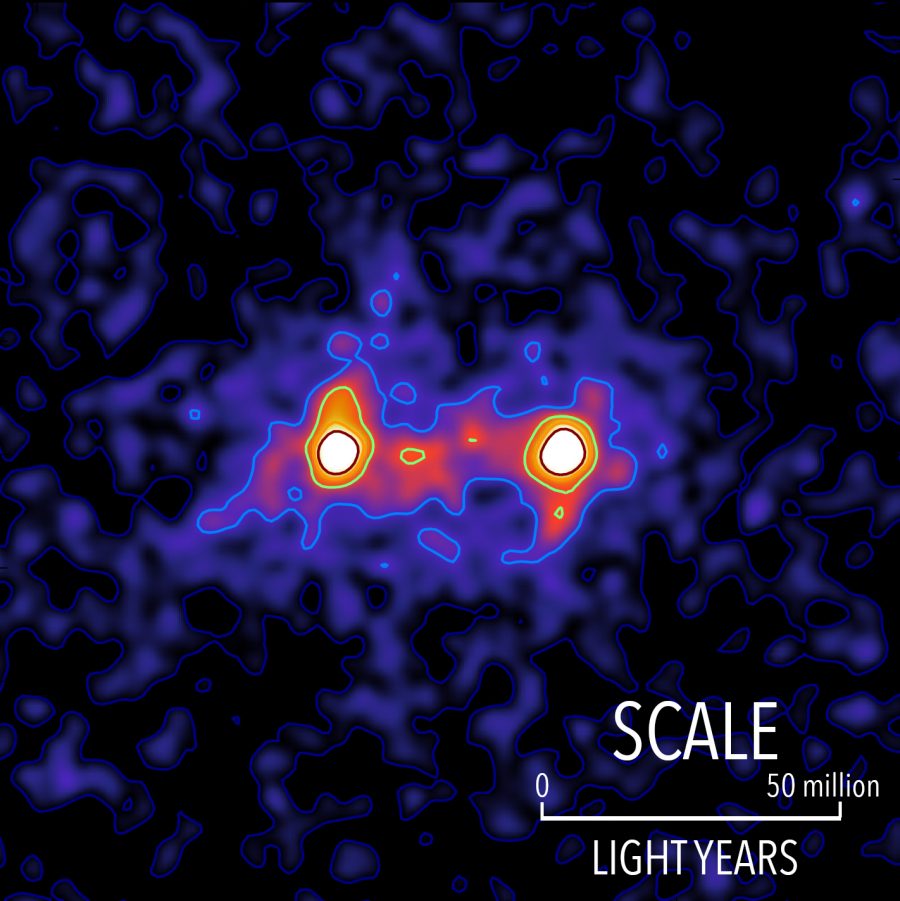Scientists from the University of Waterloo announced the first visual representation of dark matter.
It consists of a composite image of two galaxies connected by dark matter, which could confirm the theory that galaxies are linked with each other with dark matter.
The main argument behind the theory of the existence of dark matter is that there has to be a form of matter that does not reflect light that allows galaxies to keep their orbiting bodies within range.

Capturing dark matter in a picture
By combining images of over 23,000 galaxy pairs, researchers produced a single composite image of two galaxies with a dark matter bridge. The images were obtained with the Canada-France-Hawaii Telescope, determining that dark matter could change a galaxy’s shape by analyzing how its gravitational pull bends light.
“For decades, researchers have been predicting the existence of dark-matter filaments between galaxies that act like a web-like superstructure connecting galaxies together. This image moves us beyond predictions to something we can see and measure,” stated Mike Hudson, professor of astronomy at the University of Waterloo.
Astronomers believe that dark matter comprises at least 84 percent of the universe. Because it does not reflect or absorb light, it has been undetectable up to this point. The thesis of the existence of dark gained support because researchers saw that stars and galaxies had to be backed up by some form of matter because otherwise, they would just fall apart. This type of matter had to originate during the Big Bang, allowing for planetary bodies of all sizes be formed using it as support.
The term “dark matter” was first coined by French physicist Henri Poincaré in 1906, commenting Lord Kelvin’s early observations suggesting that the vast majority of bodies in the universe may be invisible. Poincaré disagreed with Kelvin, although he did ask himself about the implications of the death of millions of stars, which are now known to result in black holes.
In 1933, Swiss-American astronomer Fritz Zwicky determined that the Coma galaxy cluster could not hold itself together just by the gravity exerted by its visible matter, as its stars traveled so fast that they should have been able to escape the galaxy’s gravitational pull.

This led Zwicky to theorize that dark matter if it did exist, was much more abundant than ordinary or baryonic matter.
Much later, in the 1970s, American astronomer Vera Rubin saw that in spiral galaxies, stars that were near the core spun just as fast as those located away from the center. This struck her as odd since ordinary matter simply did not have enough gravitational pull to keep ahold of these stars. Rubin then concluded that galaxies contained an approximated ten times more dark matter than ordinary matter, proposing dark matter as the substance that makes up the vast majority of out universe.
Now, researchers relied on gravitational lensing, which refers to the distribution of matter between a distant light source and an observer that results in the bending of said light as it travels towards the observer. Albert Einstein predicted this phenomenon in his general theory of relativity, and it helped create the image that was presented by the researchers from the University of Waterloo.
Source: Royal Astronomical Society
